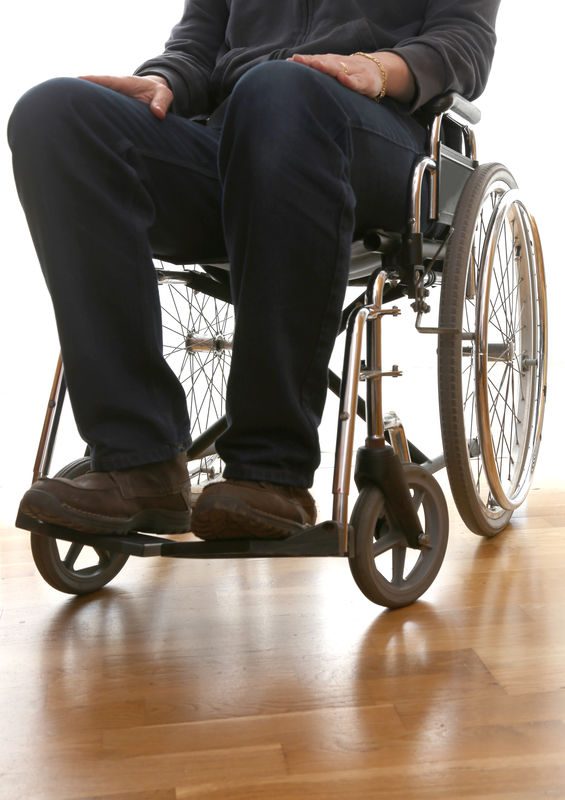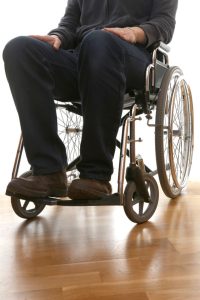
Working with a client diagnosed with ALS can be both rewarding and emotionally taxing, but it is well within the capacity of a fitness professional who is willing to take on the challenge. I found myself in this position about ten years ago when my client Phoebe was diagnosed with this debilitating motor neuron disease and wish I had known a little more about it at the time.
Knowing and recognizing the signs and symptoms of this disease can also help you raise a flag to your client and urge them seek an evaluation from a medical professional.
Read on to find out what the science says about exercise and ALS, and how personal trainers can program a client suffering with this disease.
The Science of Exercise and ALS

The science that has been published thus far indicates that ALS patients who exercise are better off than if they don’t. A study conducted on mice with ALS-modeled disease demonstrated a protective effect on exercise, especially among females. Still another mouse study indicated that moderate exercise preserved motor performance while intense exercise hastened degradation.
But what kind of exercise are we talking about?
A 2018 study of 59 ALS patients grouped them into stretching, resistance, and endurance conditions, testing their disease progression at 12 and 24 weeks. No differences were noted. Yet, this stands in contrast to a 2007 study compared 18 subjects assigned to either a home resistance exercise program or standard stretching control group. The experimental group scored higher on the ALS functional rating scale after 6 months, indicating ALS patients might retain more of their physical faculties longer and report higher functioning when participating in resistance exercise.
Another study observed 48 patients over six-months. A moderate-intensity cardio program was assigned to half the participants performed twice a week. While respiratory capacity did not improve in the experimental group, it actually worsened in the control group, pointing to some advantage gained exercise. Furthermore, functional rating scale scores were improved in the experimental group indicating that moderate, cardio exercise can be beneficial for ALS patients.
Practical Programming
Beyond digesting the research is being able to plan and program with an ALS client by keeping several key points in mind:
Communicate with the care team. Should the day come when you are asked to work with an ALS patient or learn that a current client is diagnosed the first and most important step is to open a line of communication with the client’s care team. He or she may be assigned physical therapy, making your role closely linked with that endeavor. If that is not the case, introducing yourself to a primary care provider and keeping in touch may help your client’s outcomes more than you might imagine: you are privy to observations and activities that others are not.
Identify and discuss goals. I probably don’t have to remind you at this point that this client has vastly different objectives than your other clients. The goals are simply to preserve and maximize functioning, slow the deterioration of muscle mass and range of motion (ROM), and to improve or retain aerobic capacity and endurance.
Assigning cardio. Walking and cycling are most recommended for this population, as long as balance is not yet compromised. Assign 20-30 minutes of aerobic activity three days a week. This can be broken into shorter 10-minute segments if the client desires.
Resistance training. This may be the most challenging aspect of programming to develop. The cited research supporting strength training is not specific about parameters aside from basing them on “individual abilities” two to three times a week.. If you’ve been working with this client a long time and had previously established a foundation of strength, then stick with rep ranges (or progressive changes) you have previously employed as long as the intensity remains moderate.
If the client starts to fail earlier on in sets than previously, drop the weight until the target rep range is achieved. If functioning notably degrades. focus on light weight training in low rep ranges until that is no longer an option.
Be mindful of intensity. The one certainty in the research is that vigorous exercise is not appropriate for an ALS client and can accelerate their degradation and amplify symptoms. Whether the client engages in aerobic or resistance training, the intensity should be moderate. Start using RPE, monitoring heart rate, and watching your client for signs of fatigue.
Don’t forget to stretch. Light stretching is indicated for ALS patients to improve and retain ROM and mobility. Encourage the client to engage in as much self-guided stretching as he or she is capable of and offer gentle assisted stretching for areas that may be more difficult to achieve on the client’s own accord.
Be strong. I can more easily recommend the steps a personal trainer needs to take when working on making physical improvements than to prepare you for the emotional toll of watching someone slowly degrade. Bear in mind outcomes differ widely when it comes to life expectancy, but the odds dictate that three to five years is most common. Expect to be sad some days and triumphant others, and ultimately, make peace with a potential forever “goodbye”.
References
https://n.neurology.org/content/68/23/2003.short
https://www.sciencedirect.com/science/article/abs/pii/S0960896603001044
https://www.ncbi.nlm.nih.gov/pmc/articles/PMC2892864/?tool..







